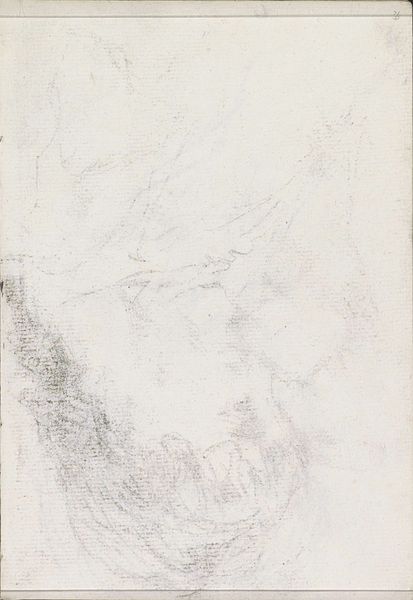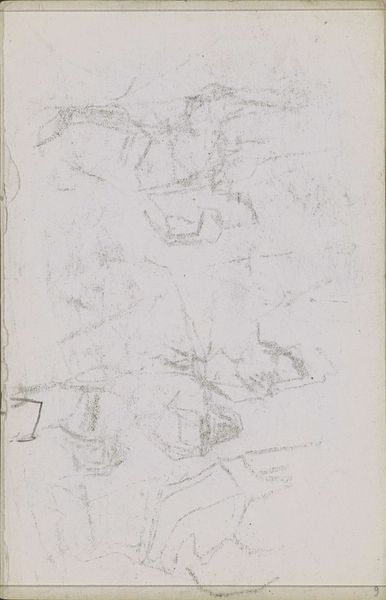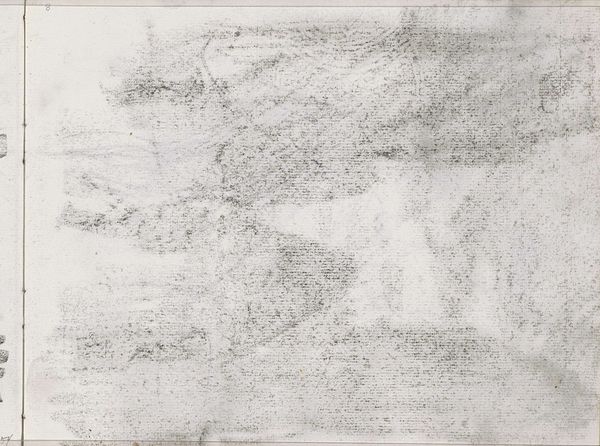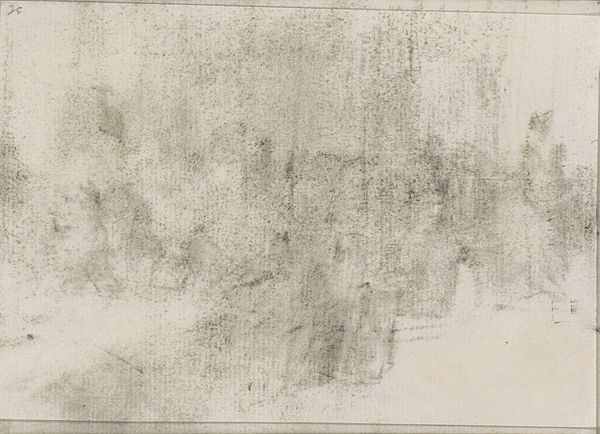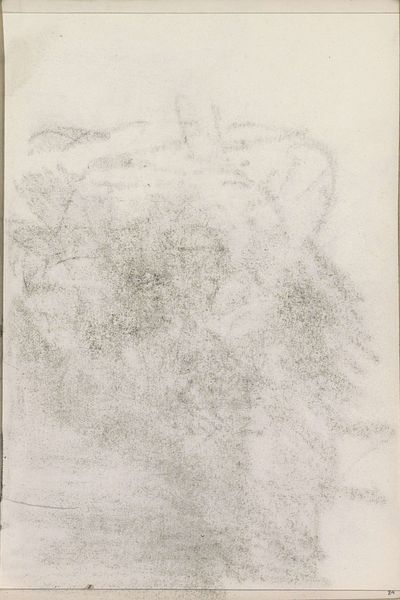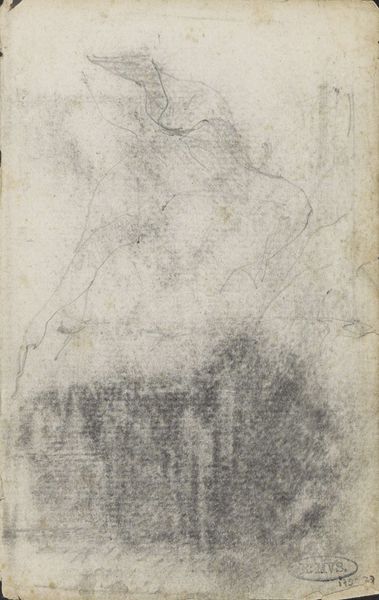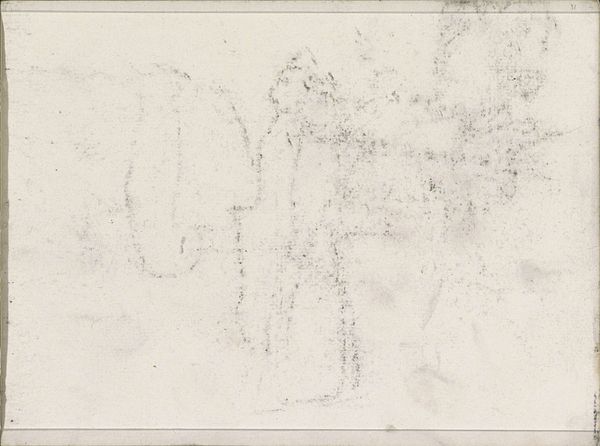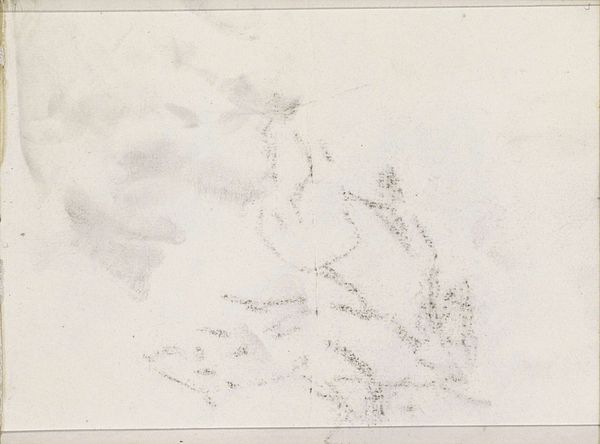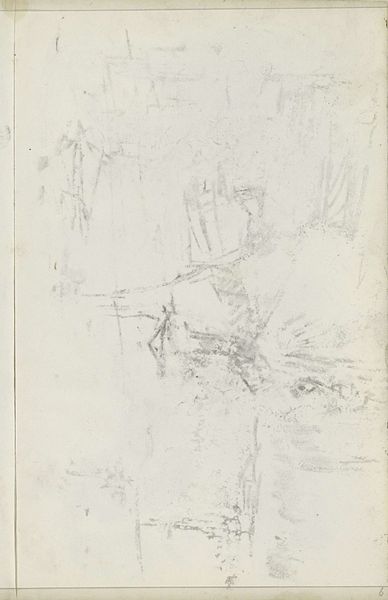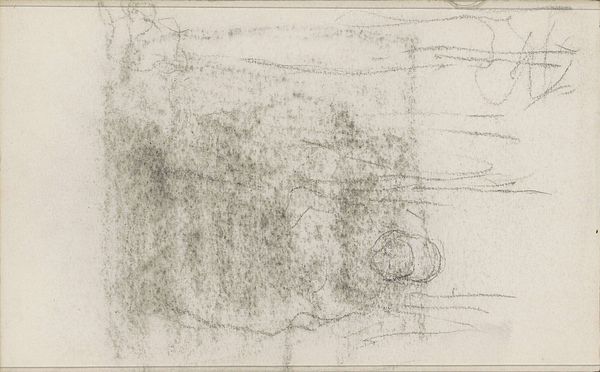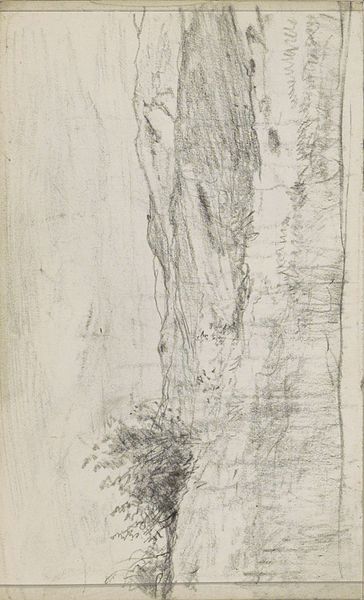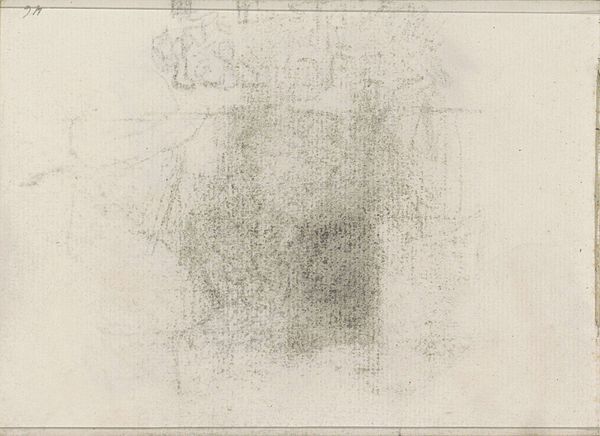
Copyright: Rijks Museum: Open Domain
Editor: Here we have "Abklatsch van de krijttekening op pagina 37," a pencil and graphite drawing by Isaac Israels, dating between 1875 and 1934. It feels ephemeral, like a fleeting thought. What do you see in this work? Curator: I see a residue of labor and a suggestion of form, hovering between representation and abstraction. What interests me most is how this 'blot' – abklatsch – becomes an accidental archive. It points to Israels' broader practice, begging questions about the role of drawing, the fleeting nature of Impressionism, and the artist's own socio-political positioning. In what way, might we ask, does this 'copy' reflect or distort the original intent? Editor: So, it’s not just a simple sketch? Curator: No, and to really push that thinking, let’s think about reproduction during this time, right? So, a question becomes: Does the imperfection inherent in this "copy"—the blurring, the loss of detail—undermine or even liberate the work from a patriarchal concept of "original" genius? Editor: That’s interesting. I hadn’t thought of it that way – seeing the imperfections as a liberation rather than a flaw. Curator: Exactly. What do these blurred lines *tell* us? It challenges us to question traditional art historical narratives around authorship and authenticity. Editor: I’m definitely going to be looking at sketches differently from now on. Curator: That’s precisely it. To see beyond the surface and delve into the social and cultural context. It truly changes everything.
Comments
No comments
Be the first to comment and join the conversation on the ultimate creative platform.
